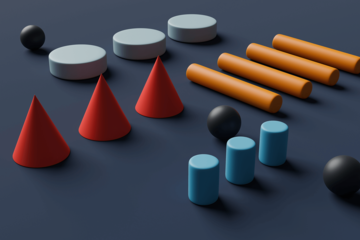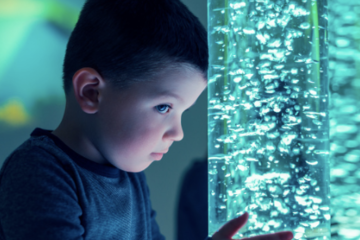We found 249 results that contain "p- image"
Posted on: #iteachmsu

Default : image playlist (Digital image processing)
Human papillomaviruses (HPVs) are ubiquitous, well adapted to their host and cleverly sequestered away from immune responses. HPV infections can be productive, subclinical or latent in both skin and mucosa. The causal association of HPV with cervical cancer, and increasingly with rising numbers of squamous cell carcinomas at other sites in both men and women, is increasingly recognised, while the morbidity of cutaneous HPV lesions, particularly in the immunosuppressed population is also significant. This chapter sets out the range of infections and clinical manifestations of the consequences of infection and its persistence and describes why HPVs are both highly effective pathogens and carcinogens, challenging to eliminate.
PEDAGOGICAL DESIGN
Posted on: #iteachmsu


Diagnostic term attention deficit/hyperactivity disorder ( without image )
Primer text from The College of William & MaryADHD is one of the most commonly diagnosed conditions of children (Centers for DiseaseControl and Prevention, 2015).
In a 2016 Centers for Disease Control and Prevention study, scientists found that 6.1 million children aged 2-17 years living in the U.S. had been diagnosed with attention-deficit/hyperactivity disorder (ADHD), which is similar to previous en
Ages 6-11: Approximately 2.4 million children
Ages 12-17: Approximately 3.3 million children
The diagnostic term attention deficit/hyperactivity disorder (ADHD) refers to individuals who display patterns of inattention, impulsivity, and overactive behavior that interfere with daily functioning (American Psychiatric Association [APA], 2013).
In a 2016 Centers for Disease Control and Prevention study, scientists found that 6.1 million children aged 2-17 years living in the U.S. had been diagnosed with attention-deficit/hyperactivity disorder (ADHD), which is similar to previous en
Ages 6-11: Approximately 2.4 million children
Ages 12-17: Approximately 3.3 million children
The diagnostic term attention deficit/hyperactivity disorder (ADHD) refers to individuals who display patterns of inattention, impulsivity, and overactive behavior that interfere with daily functioning (American Psychiatric Association [APA], 2013).
Authored by: Diagnostic term attention deficit/hyperactivity disorder
Disciplinary Content
Posted on: #iteachmsu


How does generative AI work? -- 935
Generative AI starts with a prompt that could be in the form of a text, an image, a video, a design, musical notes, or any input that the AI system can process. Various AI algorithms then return new content in response to the prompt. Content can include essays, solutions to problems, or realistic fakes created from pictures or audio of a person.
Early versions of generative AI required submitting data via an API or an otherwise complicated process. Developers had to familiarize themselves with special tools and write applications using languages such as Python.
Now, pioneers in generative AI are developing better user experiences that let you describe a request in plain language. After an initial response, you can also customize the results with feedback about the style, tone and other elements you want the generated content to reflect.
Early versions of generative AI required submitting data via an API or an otherwise complicated process. Developers had to familiarize themselves with special tools and write applications using languages such as Python.
Now, pioneers in generative AI are developing better user experiences that let you describe a request in plain language. After an initial response, you can also customize the results with feedback about the style, tone and other elements you want the generated content to reflect.
Authored by: Vaishu
Navigating Context
Posted on: #iteachmsu

Convolutional neural networks (CNN)
CNN is a multi-layered neural network with a unique architecture designed to extract increasingly complex features of the data at each layer to determine the output. CNN's are well suited for perceptual tasks.
CNN is mostly used when there is an unstructured data set (e.g., images) and the practitioners need to extract information from it
For instance, if the task is to predict an image caption:
The CNN receives an image of let's say a cat, this image, in computer term, is a collection of the pixel. Generally, one layer for the greyscale picture and three layers for a color picture.
During the feature learning (i.e., hidden layers), the network will identify unique features, for instance, the tail of the cat, the ear, etc.
When the network thoroughly learned how to recognize a picture, it can provide a probability for each image it knows. The label with the highest probability will become the prediction of the network.
CNN is mostly used when there is an unstructured data set (e.g., images) and the practitioners need to extract information from it
For instance, if the task is to predict an image caption:
The CNN receives an image of let's say a cat, this image, in computer term, is a collection of the pixel. Generally, one layer for the greyscale picture and three layers for a color picture.
During the feature learning (i.e., hidden layers), the network will identify unique features, for instance, the tail of the cat, the ear, etc.
When the network thoroughly learned how to recognize a picture, it can provide a probability for each image it knows. The label with the highest probability will become the prediction of the network.
Posted by: Chathuri Super admin..
Pedagogical Design
Posted on: #iteachmsu


Beyond space missions, this approachable design allows Laika to integrate into domestic contexts.
In the intersection of space travel and robotics, Jihee Kim introduces Laika — a concept design for a life-like, AI robot pet that can interact with humans. Laika has been designed for upcoming space projects such as NASA’s Artemis and Moon to Mars missions set for 2025-2030, envisioned as the ultimate companion for space explorers as it caters to both their physical and emotional well-being while they are away from home. Unlike the aggressive robotic dogs currently available on the market, Jihee Kim has designed Laika with a friendly and organic finish that enables it to connect to its human counterpart on an emotional level when in use while monitoring their health conditions and assisting them in emergencies. Beyond space missions, this approachable design allows Laika to integrate into domestic contexts.
Image :
video link : Embedded URL test :
Table :
Sr NO
Assignee
Task
Cat 1
Rohit
Test 1
Cat 2
Shweta
Test 2
Numbering :
Number 1
Number 2
Bullets :
Bullets 1
Bullets 2
Bullets 3
URL : https://www.designboom.com/technology/life-like-ai-robot-dog-laika-space-travelers-jihee-kim-11-19-2023/
Image :
video link : Embedded URL test :
Table :
Sr NO
Assignee
Task
Cat 1
Rohit
Test 1
Cat 2
Shweta
Test 2
Numbering :
Number 1
Number 2
Bullets :
Bullets 1
Bullets 2
Bullets 3
URL : https://www.designboom.com/technology/life-like-ai-robot-dog-laika-space-travelers-jihee-kim-11-19-2023/
Authored by: vijayalaxmi vishwanath mali
Posted on: #iteachmsu


robot pet that can interact with humans.
In the intersection of space travel and robotics, Jihee Kim introduces Laika — a concept design for a life-like, AI robot pet that can interact with humans. Laika has been designed for upcoming space projects such as NASA’s Artemis and Moon to Mars missions set for 2025-2030, envisioned as the ultimate companion for space explorers as it caters to both their physical and emotional well-being while they are away from home. Unlike the aggressive robotic dogs currently available on the market, Jihee Kim has designed Laika with a friendly and organic finish that enables it to connect to its human counterpart on an emotional level when in use while monitoring their health conditions and assisting them in emergencies. Beyond space missions, this approachable design allows Laika to integrate into domestic contexts.
Image :
video link : Embedded URL test :
Table :
Sr NO
Assignee
Task
Cat 1
Rohit
Test 1
Cat 2
Shweta
Test 2
Numbering :
Number 1
Number 2
Bullets :
Bullets 1
Bullets 2
Bullets 3
URL : https://www.designboom.com/technology/life-like-ai-robot-dog-laika-space-travelers-jihee-kim-11-19-2023/
Image :
video link : Embedded URL test :
Table :
Sr NO
Assignee
Task
Cat 1
Rohit
Test 1
Cat 2
Shweta
Test 2
Numbering :
Number 1
Number 2
Bullets :
Bullets 1
Bullets 2
Bullets 3
URL : https://www.designboom.com/technology/life-like-ai-robot-dog-laika-space-travelers-jihee-kim-11-19-2023/
Authored by: Vijayalaxmi vishwanath mali
Posted on: #iteachmsu


AI can turn spoken language into photorealistic sign language videos Read more: https://www.newscie
An AI that can produce photorealistic videos of sign language interpreters from speech could improve accessibility by removing the need for humans.
Ben Saunders at the University of Surrey, UK, and his colleagues used a neural network that converts spoken language into sign language. The system, called SignGAN, then maps these signs on to a 3D model of the human skeleton.
The team also trained the AI on videos of real sign language interpreters, teaching it how to create a photorealistic video of anyone signing based off an image of …
Read more: https://www.newscientist.com/article/2261113-ai-can-turn-spoken-language-into-photorealistic-sign-language-videos/#ixzz6g1KMybts
Ben Saunders at the University of Surrey, UK, and his colleagues used a neural network that converts spoken language into sign language. The system, called SignGAN, then maps these signs on to a 3D model of the human skeleton.
The team also trained the AI on videos of real sign language interpreters, teaching it how to create a photorealistic video of anyone signing based off an image of …
Read more: https://www.newscientist.com/article/2261113-ai-can-turn-spoken-language-into-photorealistic-sign-language-videos/#ixzz6g1KMybts
Posted by: Greg Thomsan
Pedagogical Design
Posted on: #iteachmsu


Teaching and Learning in Early Childhood Education and Care
Early education ensures free, integral and harmonious development of the child's personality, according to his rhythm and needs. The education provided has to ensure the differentiated stimulation of children, aiming the intellectual, emotional, social and physical development of each child and targeting to achieve the following results of early education (from birth to 6/7 years old):
The free, integral and harmonious development of the child's personality, according to his own pace and general needs, supporting his autonomous and creative training.
Development of the capacity to interact with other children, with adults and with the environment to acquire new knowledge, skills, attitudes and behaviours; encouraging exploration, exercises, tests and experiments, as autonomous learning experiences.
The discovery, by each child, of his/her own identity and autonomy and the development of a positive self-image.
Supporting the child in the acquisition of knowledge, abilities, skills and attitudes required for his school entry and throughout life.
All activities with young children should respect child's right to play - viewed as a form of activity, method, procedure and means of achieving educational approaches at early ages, as well as a method of stimulating the capacity and creativity of the child, as a right of him and as an opening to freedom to choose, according to his/her own needs.
The free, integral and harmonious development of the child's personality, according to his own pace and general needs, supporting his autonomous and creative training.
Development of the capacity to interact with other children, with adults and with the environment to acquire new knowledge, skills, attitudes and behaviours; encouraging exploration, exercises, tests and experiments, as autonomous learning experiences.
The discovery, by each child, of his/her own identity and autonomy and the development of a positive self-image.
Supporting the child in the acquisition of knowledge, abilities, skills and attitudes required for his school entry and throughout life.
All activities with young children should respect child's right to play - viewed as a form of activity, method, procedure and means of achieving educational approaches at early ages, as well as a method of stimulating the capacity and creativity of the child, as a right of him and as an opening to freedom to choose, according to his/her own needs.
Posted by: Chathuri Hewapathirana
Posted on: #iteachmsu

Full blood count
Department of Haematology
Notes
Full blood counts are performed on automated equipment and provide haemoglobin concentration, red cell indices, white cell count (with a differential count) and platelet count.
The presence of abnormal white cell and red cell morphology is flagged by the analysers.
Blood films may be inspected to confirm and interpret abnormalities identified by the cell counter, or to look for certain specific haematological abnormalities.
Grossly abnormal FBC results and abnormal blood films will be phoned through to the requestor.
There is no need to request a blood film to obtain a differential white count. It is, however, important that clinical details are provided to allow the laboratory to decide whether a blood film, in addition to the automated analysis, is required.
Under some circumstances a differential is not routinely performed, e.g. pre-op, post-op, antenatal and postnatal requests.
Full Blood Counts are performed at CGH and GRH
See also: Reticulocyte Count
The FBC comprises the following tests
Standard
Haemoglobin (Hb)
White Blood Count (WBC)
Platelet Count (Plt)
Red Cell Count (RBC)
Haematocrit (HCT)
Mean Cell Volume - Red cell (MCV)
Mean Cell Haemoglobin (MCH)
Differential White Cell Count (where applicable)
Neutrophils
Lymphocytes
Monocytes
Eosinophils
Basophils
And if appropriate
Blood Film
Sample Requirements
2ml or 4ml EDTA sample or a Paediatric 1ml EDTA sample.
Sample Storage and Retention
Pre analysis storage: do not store, send to laboratory within 4 hours.
Sample retention by lab: EDTA samples are retained for a minimum of 48 hours at 2-10°C
Transport of samples may affect sample viability, i.e. FBC results will degenerate if exposed to high temperatures, such as prolonged transportation in a hot car in summer.
This test can be added on to a previous request as long as there is sufficient sample remaining and the sample is less than 24 hours old.
Turnaround Times
Clinical emergency: 30 mins
Other urgent sample: 60 mins
Routine: within 2 hours
Reference Ranges
If references ranges are required for paediatric patients please contact the laboratory for these.
Parameter Patient Reference Range Units Haemoglobin Adult Male 130 - 180 g/L Adult Female 115 - 165 g/L Red Cell Count Adult Male 4.50 - 6.50 x10^12/L Adult Female 3.80 - 5.80 x10^12/L Haematocrit Adult Male 0.40 - 0.54 L/L Adult Female 0.37 - 0.47 L/L Mean Cell Volume Adult 80 - 100 fL Mean Cell Haemoglobin Adult 27 - 32 pg White Cell Count Adult 3.6 - 11.0 x10^9/L Neutrophils Adult 1.8 - 7.5 x10^9/L Lymphocytes Adult 1.0 - 4.0 x10^9/L Monocytes Adult 0.2 - 0.8 x10^9/L Eosinophils Adult 0.1 - 0.4 x10^9/L Basophils Adult 0.02 - 0.10 x10^9/L Platelet Count Adult 140 - 400 x10^9/L
Notes
Full blood counts are performed on automated equipment and provide haemoglobin concentration, red cell indices, white cell count (with a differential count) and platelet count.
The presence of abnormal white cell and red cell morphology is flagged by the analysers.
Blood films may be inspected to confirm and interpret abnormalities identified by the cell counter, or to look for certain specific haematological abnormalities.
Grossly abnormal FBC results and abnormal blood films will be phoned through to the requestor.
There is no need to request a blood film to obtain a differential white count. It is, however, important that clinical details are provided to allow the laboratory to decide whether a blood film, in addition to the automated analysis, is required.
Under some circumstances a differential is not routinely performed, e.g. pre-op, post-op, antenatal and postnatal requests.
Full Blood Counts are performed at CGH and GRH
See also: Reticulocyte Count
The FBC comprises the following tests
Standard
Haemoglobin (Hb)
White Blood Count (WBC)
Platelet Count (Plt)
Red Cell Count (RBC)
Haematocrit (HCT)
Mean Cell Volume - Red cell (MCV)
Mean Cell Haemoglobin (MCH)
Differential White Cell Count (where applicable)
Neutrophils
Lymphocytes
Monocytes
Eosinophils
Basophils
And if appropriate
Blood Film
Sample Requirements
2ml or 4ml EDTA sample or a Paediatric 1ml EDTA sample.
Sample Storage and Retention
Pre analysis storage: do not store, send to laboratory within 4 hours.
Sample retention by lab: EDTA samples are retained for a minimum of 48 hours at 2-10°C
Transport of samples may affect sample viability, i.e. FBC results will degenerate if exposed to high temperatures, such as prolonged transportation in a hot car in summer.
This test can be added on to a previous request as long as there is sufficient sample remaining and the sample is less than 24 hours old.
Turnaround Times
Clinical emergency: 30 mins
Other urgent sample: 60 mins
Routine: within 2 hours
Reference Ranges
If references ranges are required for paediatric patients please contact the laboratory for these.
Parameter Patient Reference Range Units Haemoglobin Adult Male 130 - 180 g/L Adult Female 115 - 165 g/L Red Cell Count Adult Male 4.50 - 6.50 x10^12/L Adult Female 3.80 - 5.80 x10^12/L Haematocrit Adult Male 0.40 - 0.54 L/L Adult Female 0.37 - 0.47 L/L Mean Cell Volume Adult 80 - 100 fL Mean Cell Haemoglobin Adult 27 - 32 pg White Cell Count Adult 3.6 - 11.0 x10^9/L Neutrophils Adult 1.8 - 7.5 x10^9/L Lymphocytes Adult 1.0 - 4.0 x10^9/L Monocytes Adult 0.2 - 0.8 x10^9/L Eosinophils Adult 0.1 - 0.4 x10^9/L Basophils Adult 0.02 - 0.10 x10^9/L Platelet Count Adult 140 - 400 x10^9/L
Authored by: Vijaya
Posted on: #iteachmsu


Listening. Deeply listen to what others say and to the feelings, experiences, and wisdom behind what they say.
Humility. Recognize that, however passionately we hold ideas and opinions, other people may hold pieces of the puzzle that we don’t.
Humility. Recognize that, however passionately we hold ideas and opinions, other people may hold pieces of the puzzle that we don’t.
Posted by: Chathuri Super admin..
Disciplinary Content
Posted on: #iteachmsu

Digital image processing deals with manipulation of digital images through a digital computer. It is a subfield of signals and systems but focus particularly on images. DIP focuses on developing a computer system that is able to perform processing on an image. The input of that system is a digital image and the system process that image using efficient algorithms, and gives an image as an output. The most common example is Adobe Photoshop. It is one of the widely used application for processing digital images
Posted by: Super Admin
Disciplinary Content
Posted on: #iteachmsu

Machine-generated data is information automatically generated by a computer process, application, or other mechanism without the active intervention of a human. While the term dates back over fifty years,[1] there is some current indecision as to the scope of the term. Monash Research's Curt Monash defines it as "data that was produced entirely by machines OR data that is more about observing humans than recording their choices."[2] Meanwhile, Daniel Abadi, CS Professor at Yale, proposes a narrower definition, "Machine-generated data is data that is generated as a result of a decision of an independent computational agent or a measurement of an event that is not caused by a human action."[3] Regardless of definition differences, both exclude data manually entered by a person.[4] Machine-generated data crosses all industry sectors. Often and increasingly, humans are unaware their actions are generating the data.[
Posted by: Chathuri Super admin..
Assessing Learning
Posted on: #iteachmsu

The concept that computer programs can automatically learn from and adapt to new data without being assisted by humans. Deep learning techniques enable this automatic learning through the absorption of huge amounts of unstructured data such as text, images, or video.
Posted by: Rupali Jagtap
Assessing Learning
Posted on: #iteachmsu


What is an accommodation?
An accommodation is an adaptation or change to educational environments or practices that helps a student overcome the barriers, or challenges, presented by the disability. It does not change the expectations for learning or the requirements of the task.
An accommodation is an adaptation or change to educational environments or practices that helps a student overcome the barriers, or challenges, presented by the disability. It does not change the expectations for learning or the requirements of the task.
Posted by: Chathuri Super admin..
Assessing Learning



